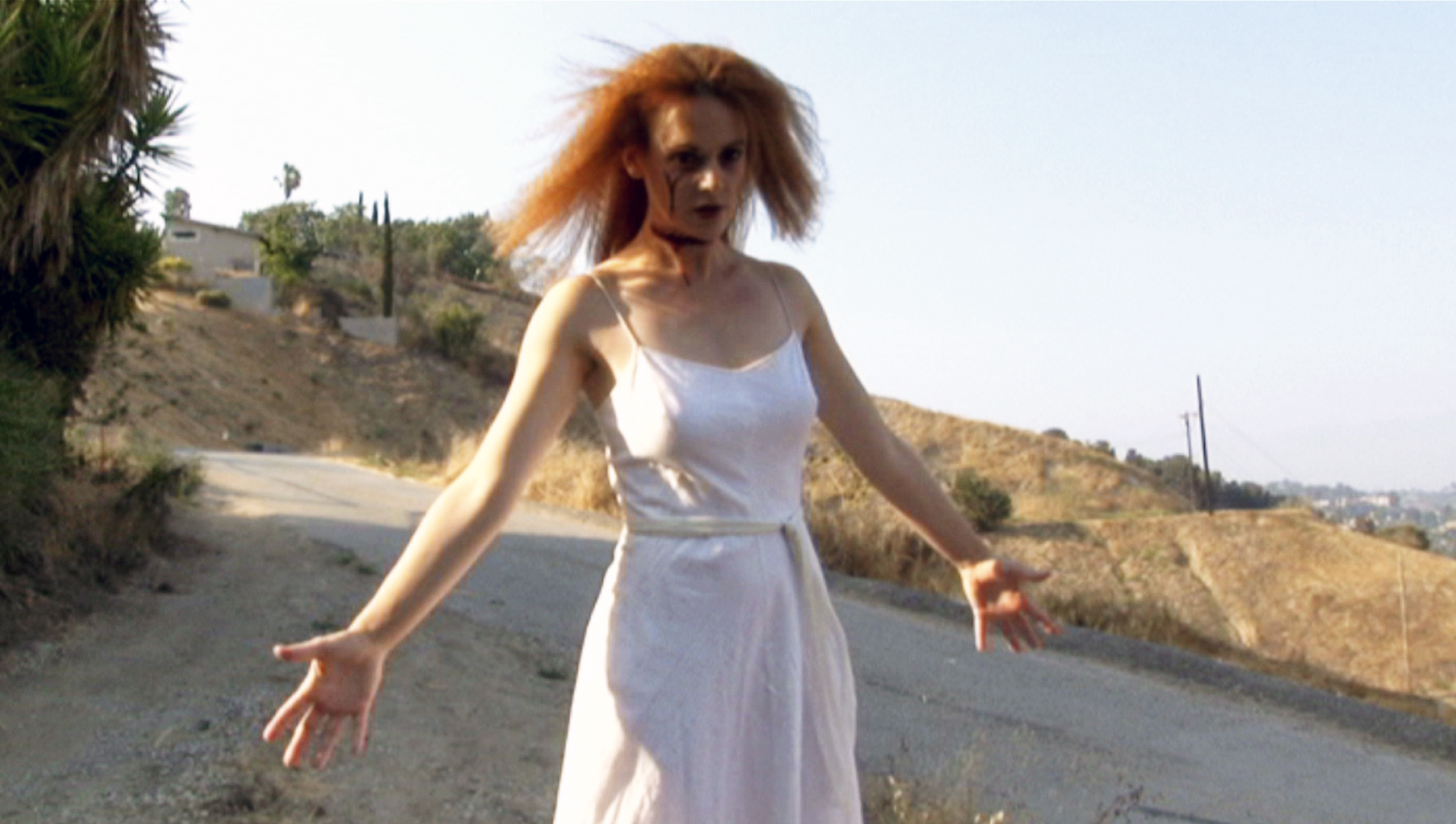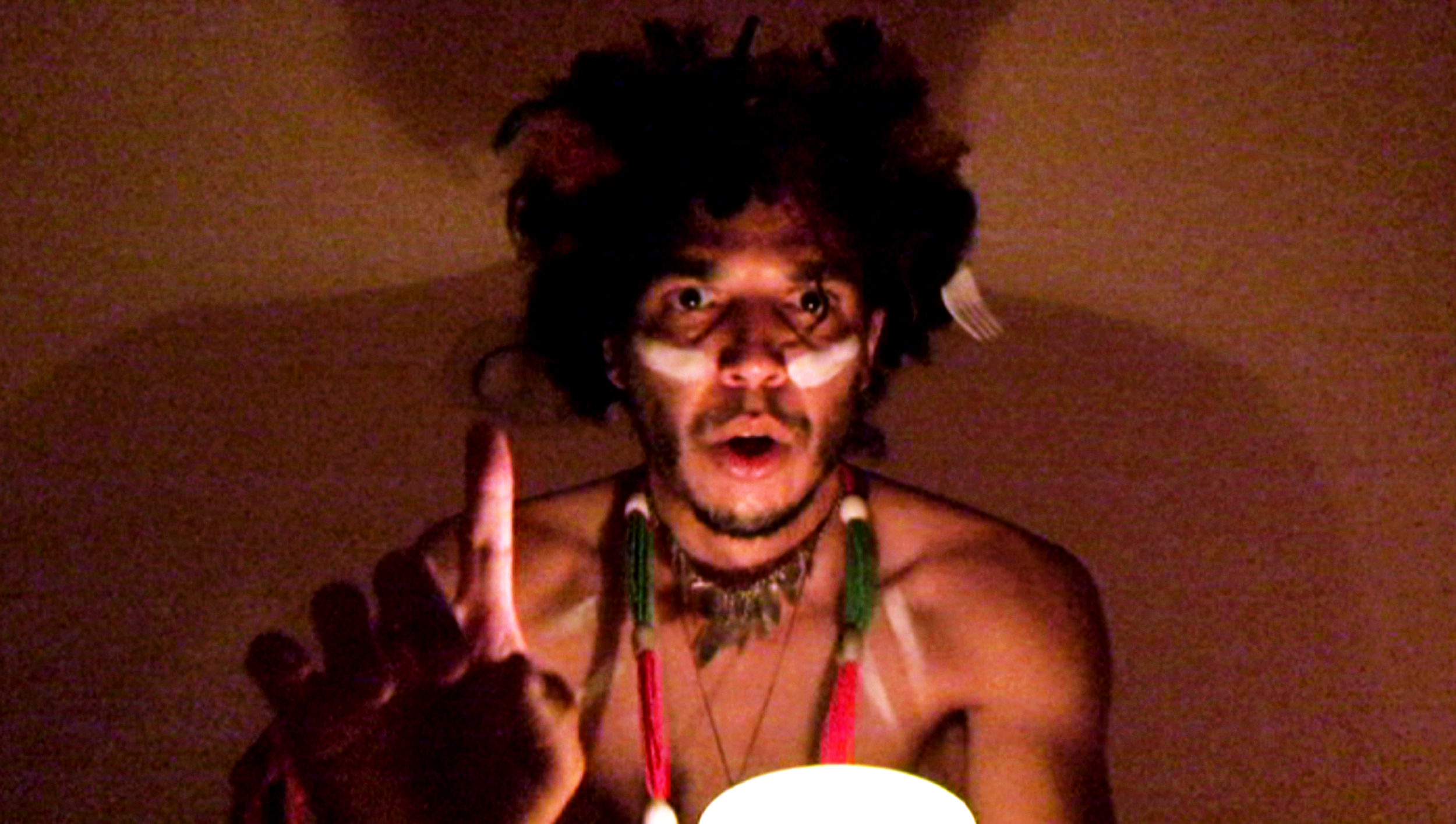
A film still from “The Night Epi$ode,” a video installation by My Barbarian currently on display at the Hammer. The art group will perform at 7 p.m. today at the Hammer. The group fuses satire and the supernatural in their video installations and performances. (Credit: Hammer Museum)
Geometric shapes, hanging windows and doors that lead to nowhere linger in the shadows of the Hammer Museum’s exhibit, “The Night Epi$ode.” Los Angeles-based performance group My Barbarian put together the exhibit by finding inspiration in the supernatural to parody political and social issues through their video gallery exhibition.
Hammer Museum senior curator Anne Ellegood reached out to the group after she saw the performance in New York.
Tonight, the founders of My Barbarian, Malik Gaines and Alexandro Segade, both of whom are UCLA alumni, and Jade Gordon will be taking part in a performance of “Death Panel Discussion,” an addition to their exhibition “The Night Epi$ode” which is on display through Sunday.
“Because My Barbarian is based in Los Angeles, I thought it would be perfect for us to do it because I felt that it should be seen by audiences here,” Ellegood said.
My Barbarian is a performance troupe that acts out ideas from cultural myths and engages history, culture and art through performance.
“What we do is form other groups as part of our project and bring other people in to work with us to create critical engagements with different ideas. Often we form a fantastical, humorous, exaggerated point of view,” Segade said.
The exhibition aspect of “The Night Epi$ode” showcases a series of videos where the creators address current economic and political issues, including the issue of health care.
“There’s a story about a woman who loses her health insurance and meets a growing alien. She wants to marry the creature but they can’t get married. … In terms of our own, of course it’s different because the creature is a ball of light, so it’s kind of a joke,” Segade said.
The narratives that they include in the videos cater to a younger audience and also contain references from more popular art forms such as film, television and popular culture.
“One of the reasons we use television and other kinds of popular forms like pop music is that it’s accessible and because people can relate to them. Since it’s like a television show, we can use more challenging concepts … and we can be a little bit more critical of political ideas or art ideas,” Gaines said.
Tonight’s performance of “Death Panel Discussion” is a play in the form of a panel discussion. Audiences can expect the three curators from the gallery show exhibition to put on a show that includes story-telling, an evil PowerPoint presentation with a mind of its own and random instances of characters breaking out into song.
“(The three curators) come back and have a panel discussion which turns out also to be a death panel meeting, and within that they tell a scary story and compete with each other to be the most knowledgeable and bizarre person on the panel. It’s a full-length performance and expands on the ideas that are already in the video show,” Gaines said.
In addition to the theatrics, the characters address a broad range of ideas from witchcraft and witch trials all the way to the contemporary art scene in Los Angeles.
“It’s a response to the both economic and political climate that we’re in, and we used science fiction and horror movies to express the feelings we had when the economic collapse first started and watching how the political discourse had become so absurd,” Segade said.
The videos were shot over a course of a few months before their 2009 New York exhibition. Segade said that since the group was on a low budget for “The Night Epi$ode,” they wrote many of their scripts to fit into locations, including their friends’ houses or places they knew they would be able to shoot at for a low cost.
For instance, the group had to improvise when they used a friend’s pool to convey being in the ocean stuck on a lifeboat.
“It’s something that I like to call available-ism, which is an idea we learned from a performance artist in the ’90s who told us “˜You have to do whatever you can with whatever is available,’ so we took that to heart,” Segade said.
Although Segade compares My Barbarian to The Traveling Troubadours, they created “The Night Epi$ode” specifically for a gallery through videos and looked at it as a new way of working. They imagined the project to be showcased in the gallery from the very beginning and contributed every detail, including the number of monitors and the way the exhibition would look.
“They wanted to have a performing component to that exhibition because that’s really what they do. They’re very much committed to doing live performance as part of their practice so it makes sense,” Ellegood said.
